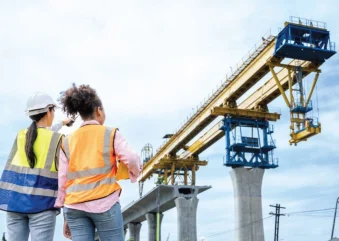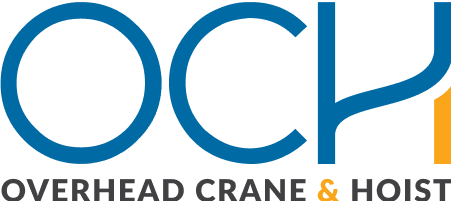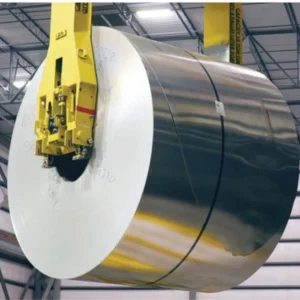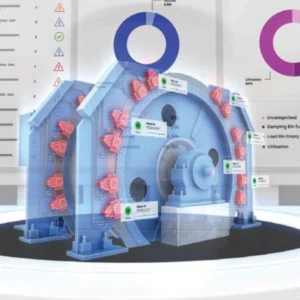
The lifting industry plays a critical role in numerous sectors, including construction, manufacturing, logistics, and transportation. When moving heavy loads, lifting is essential for productivity, efficiency, and safety. Demand for sophisticated lifting solutions continues to rise, thanks to advancements in technology and increasing automation. However, despite its significance, the industry faces challenges, particularly in attracting a diverse workforce that reflects the communities it serves.
The modern, global economy demands safe, fast, economical, and efficient lifting solutions. Demand for skilled workers is growing. This growth is driven by various factors, including increased infrastructure development, the rise of automation, and the need for efficient material handling solutions across sectors such as construction, manufacturing, and logistics. Smart cranes and automated lifting systems create demand for professionals who possess not only technical talent, but also a strong understanding of safety protocols and regulatory compliance.
Despite the growing demand for skilled workers in the lifting industry, women remain significantly underrepresented in this field and in manufacturing as a whole. According to the National Science Foundation, women accounted for only 28% of the workforce in science and engineering fields as of 2020. In the crane and lifting industry specifically, studies indicate that women hold less than 10% of technical and engineering roles. This gender disparity robs industry of talent and limits innovation and growth.
What’s needed to attract more women to careers in manufacturing? According to Karen Norheim, president/CEO, American Cranes, women in the industry need to stand up and stand out, inspiring others by providing a vision of what is possible. “I invite women already in manufacturing to be role models to inspire the next generation of women, and men, to enter our industry. I encourage them to promote their pride and passion for manufacturing by sharing why they love their jobs, their companies, and this industry.” Norheim says that workforce diversity leads to “cognitive diversity to solve problems more effectively. The greater perspective gained on an issue, the better the solutions will be.”
Asked how she chose a career in the lifting industry, Norheim says, “It chose me… Although I was very reluctant. My father asked me to come and work for him, and I was like, okay, how cool can manufacturing be? Well, I said yes. And I found my passion for manufacturing.”
Roles in the lifting industry are plentiful, and the opportunities are impressive, but not enough people are aware of what’s available. Norheim says, “Our biggest hurdle is that many women are just not aware of the opportunities available in manufacturing. There is significant overlap between what women want in careers and the attributes of careers in manufacturing. That’s why we need to educate others about the opportunities and benefits of a manufacturing career.”
April Pitts-Baggett, PhD Metallurgist and Quality Assurance engineer at Nurcor Steel, spends a lot of time each year educating new grads and new hires about the possibilities for women in manufacturing. She travels regularly to career expos and recruiting events, putting the word out that manufacturing jobs have a lot to offer. She says; “The work is challenging and satisfying. The pay is competitive, if not better, but not many people know about it.”

Fresh out of school, Pitts-Baggett jumped straight into heavy industry as a metallurgist at Nucor. Of her early career, she said; “I really didn’t think about being a woman early on. I was new and young and those were the most immediate obstacles in my head. Thinking about what it was to be a woman in manufacturing came later.”
Pitts-Baggett encourages women in professions and industries of all kinds to “put yourself out there. Women are particularly susceptible to ‘imposter syndrome’, thinking we aren’t good enough and don’t measure up. Forget that. Just trust in your abilities and put yourself out there. You’ll be pleasantly surprised.”
Operations and maintenance roles are crucial in the lifting industry, ensuring equipment such as cranes, hoists, and other lifting devices function safely and efficiently. These positions involve a range of responsibilities, from routine inspections and preventive maintenance to troubleshooting and repairing mechanical and electrical systems.
Project management requires planning, overseeing, and executing lifting system implementations. Women in project management roles bring a diverse set of skills, including strong organizational abilities, effective communication, and strategic thinking. Certifications such as Project Management Professional (PMP) and specialized training in lifting operations can enhance their credentials and open doors to higher-level positions.
Safety and compliance roles are essential, since the safety of personnel and equipment is of utmost importance. Professionals in this field are responsible for developing and implementing safety protocols, conducting risk assessments, and ensuring adherence to industry regulations. Women in safety and compliance positions bring valuable perspectives that enhance workplace safety culture and promote proactive risk management. Responsibilities include safety training, investigating incidents, and collaborating with management for a safe working environment.

Sales and business development roles present exciting opportunities for women to make a significant impact. These positions focus on building client relationships, identifying new business prospects, and driving revenue growth. Women in these roles can utilize their communication skills and industry knowledge to thrive in a competitive environment.
Product management is a pivotal role that combines engineering, marketing, and business strategy. Women in these positions are essential for shaping the development and lifecycle of lifting equipment and solutions. Responsibilities include analyzing market trends, collaborating with engineering teams to define product specifications, overseeing product lifecycle, and gathering customer feedback for improvement.
Research and development (R&D) is the driving force behind product innovation. Women in R&D roles contribute valuable insights and creativity to product design and improvement, ensuring products meet the evolving needs of the market. Key responsibilities include conducting experiments, analyzing data, developing prototypes, and collaborating with engineering teams to implement new technologies.
Engineering is the foundation of heavy industry. Women in engineering roles contribute to various disciplines, including mechanical, electrical, structural, and software engineering. Key responsibilities include new and improved product designs, safety and compliance, quality assurance, control systems, and automation.
Several professional associations support and promote the lifting industry, offering resources, networking opportunities, and standards development. Key organizations include:
- Crane Manufacturers Association of America (CMAA): Focuses on standardization and quality in the overhead crane industry.
- Specialized Carriers & Rigging Association (SC&RA): Represents companies in specialized transportation, crane and rigging operations.
- Association of Crane & Rigging Professionals (ACRP): Dedicated to improving crane operations and rigging activities across industries.
- Lifting Equipment Engineers Association (LEEA): An international trade association for the lifting industry, offering training and certification.
- Associated Wire Rope Fabricators (AWRF): Promotes interests of companies manufacturing and distributing lifting and rigging devices.
- Hoist Manufacturers Institute (HMI): Represents leading suppliers of hoisting equipment.
- Association of Iron & Steel Technology (AIST): Advances the technical development, production, processing and application of iron and steel. AIST’s “Women in Steel” conference, September 16-18, is an excellent opportunity for professionals in steel and lifting to connect, share knowledge, and promote gender diversity. Successful leaders like Norheim and Pitts-Baggett, are powerful examples of what is possible for women in the lifting industry. Their journeys illustrate the potential for success and the importance of mentorship and role models.”
Specialized education and training is available for cranes and lifting equipment, training options include:
- Crane Operator Certification: Programs offered by organizations such as the National Commission for the Certification of Crane Operators (NCCCO) and the National Center for Construction Education and Research (NCCER) provide comprehensive training and certification for crane operators. Programs cover topics such as crane types, operational safety, and load management.
- Rigging and Signalperson Training: Training programs focus on proper rigging techniques, load calculations, and the role of signalpersons in crane operations. Rigger and signalperson certifications are available through organizations like the NCCCO.
- Safety and Compliance Training: Courses that emphasize OSHA regulations, safety protocols, and best practices for crane operation. These programs ensure operators and workers understand the legal requirements and safety standards necessary for lifting.
- Hands-On Equipment Training: Many training centers offer practical, hands-on training with various types of cranes, such as tower cranes, mobile cranes, and overhead cranes. This training allows participants to gain real-world experience under the supervision of qualified instructors.





